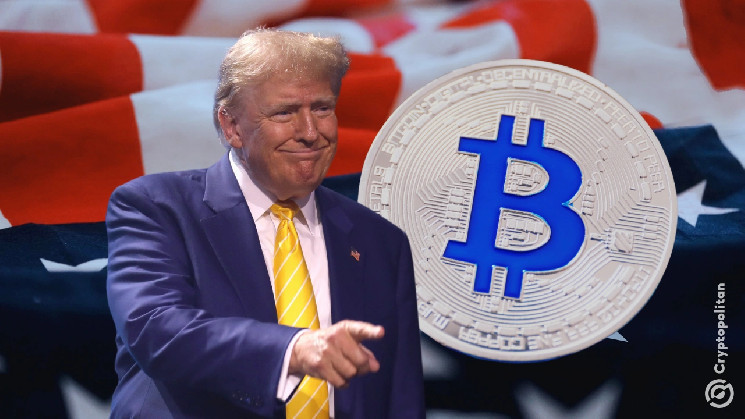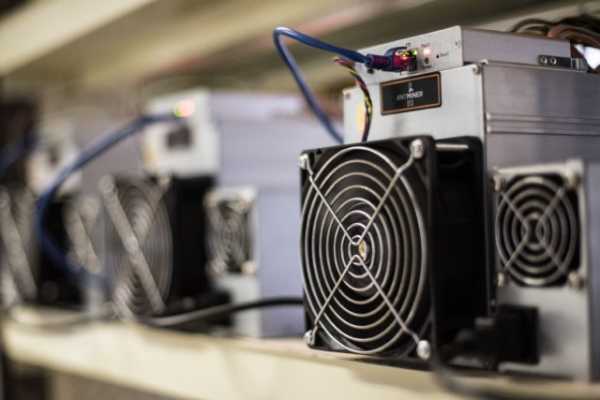Blockchain realities threaten Trump’s “Made in USA” Bitcoin promise

Donald Trump’s “Made in USA” Bitcoin pledge is hitting the hard wall of blockchain reality. Back in June, the ‘crypto president’ posted on Truth Social that he wanted all remaining Bitcoin to be mined in the United States.
The announcement came after a high-profile meeting at Mar-a-Lago with major U.S. crypto miners.
“VOTE FOR TRUMP! Bitcoin mining may be our last line of defense against a CBDC. Biden’s hatred of Bitcoin only helps China, Russia, and the Radical Communist Left. We want all the remaining Bitcoin to be MADE IN THE USA!!! It will help us be ENERGY DOMINANT!!!” he wrote.
But Bitcoin’s network doesn’t care about borders. It’s decentralized, which means no one controls it—not Trump, not China, not even the miners themselves.
With 95% of Bitcoin already mined and the remaining slivers left scattered in a global tug-of-war, the idea of making Bitcoin strictly American is more fantasy than policy.
Global mining competition is crushing
Bitcoin mining is big business—tens of billions of dollars big. Trump’s patriotic pitch has to contend with a global playing field teeming with deep-pocketed rivals. Russia’s oligarchs, Dubai’s royals, and Chinese investors in Africa are all swinging their weight around.
They’ve got cheap power, endless capital, and no interest in playing second fiddle to the U.S. The numbers tell the story. Bitcoin mining in the U.S. has grown into a multi-billion-dollar industry, but American miners contribute less than 50% of the global hashrate—the computational horsepower that drives mining. This isn’t because U.S. miners lack ambition. It’s because competitors worldwide are relentless.
Kazakhstan is ramping up mining farms. China is quietly bringing banned operations back online. Ethiopia’s hydropower resources are turning it into an African crypto hotspot, while Argentina’s miners rely on Bitcoin to escape crushing inflation.
And then there’s the Middle East. MARA Holdings, the biggest Bitcoin miner by market cap, partnered with Abu Dhabi’s sovereign wealth fund to build a colossal mining farm. Even U.S. companies are playing the global game, finding cheaper energy and cutting deals abroad to stay afloat.
Trump’s vision is ambitious, but the global mining scene is a battlefield. Everyone wants a slice of the pie, and some countries—flush with cheap energy—can undercut U.S. operations every step of the way.
U.S. miners face mounting pressure
American miners were quick to rally behind Trump after he changed from a crypto skeptic to a full-blown industry ally. Riot Platforms and CleanSpark Inc. bet on Trump’s pledge to ease environmental scrutiny, tamp down competition and kill off Biden-era regulations.
These miners threw their weight behind Trump, helping the crypto industry pump $135 million into his campaign. But support from Trump doesn’t make the challenges go away. Bitcoin’s 113% return in 2024 hasn’t saved most mining stocks, which are ending the year deep in the red.
Companies like Argo Blockchain are down 84%, while Sphere 3D has lost 69%. The biggest winners? Core Scientific, which climbed 327%, and Bitdeer, up 167%. For most miners, though, the numbers don’t look great.
It’s not just about market returns. Mining difficulty skyrocketed by 50.71% this year, making it harder than ever to secure new Bitcoin. Meanwhile, operational costs have exploded. BitFuFu, for instance, reported a staggering 168% jump in mining costs, hitting $51,887 per Bitcoin mined.
And let’s talk about machines—the lifeblood of any mining operation. Most of these machines come from Bitmain, a Chinese manufacturer. A trade war with China could make those rigs way more expensive, slamming American miners with costs they can’t afford to absorb.
U.S.-based miners aren’t just battling global competition—they’re also expanding their hosting services. In plain terms, this means running mining machines owned by foreign investors. Even within U.S. borders, it’s not all “Made in USA.”
Halving cuts, diversification grows
Bitcoin halving—where mining rewards are slashed in half every four years—is squeezing profits like never before. In April, rewards dropped from 6.25 BTC to 3.125 BTC per block. This predictable event cut into miners’ revenue, which stood at $42 million in December, compared to a peak of $100 million earlier this year.
But some miners are adapting. Core Scientific, traditionally focused on Bitcoin, jumped into AI by teaming up with CoreWeave. They’re hosting Nvidia GPUs, cashing in on the AI boom, and expecting $8.7 billion in revenue over the next 12 years. Other companies, like Hut 8 and MARA, are stacking Bitcoin reserves to strengthen their balance sheets.
U.S. miners raised over $2.2 billion through stock offerings this year. While that’s a lifeline for many, it shows just how challenging the industry has become. Reduced rewards, soaring costs, and fierce competition are pushing miners to get creative—or get out.
A Step-By-Step System To Launching Your Web3 Career and Landing High-Paying Crypto Jobs in 90 Days.
Source: cryptonews.net



